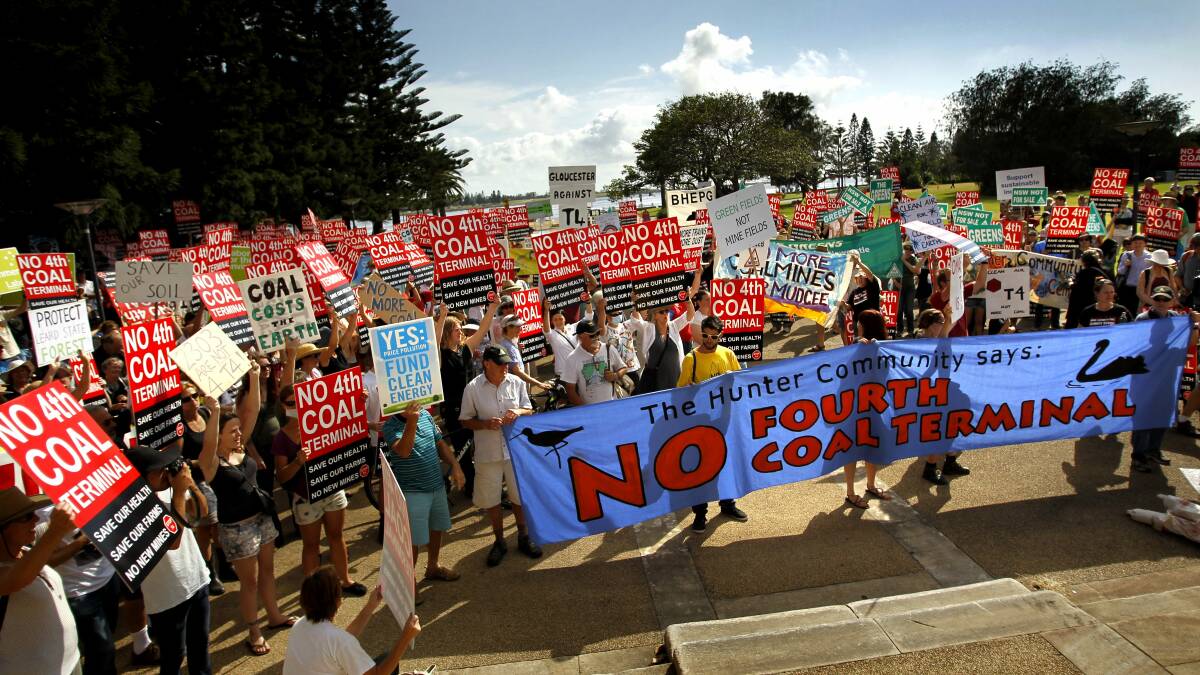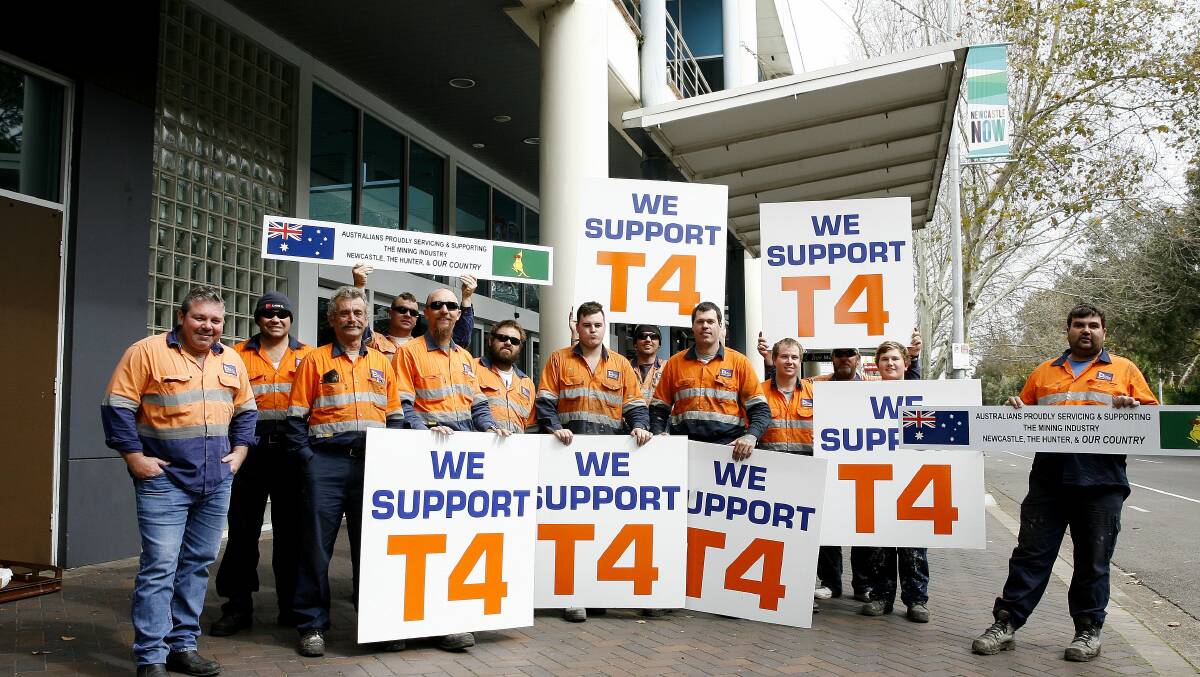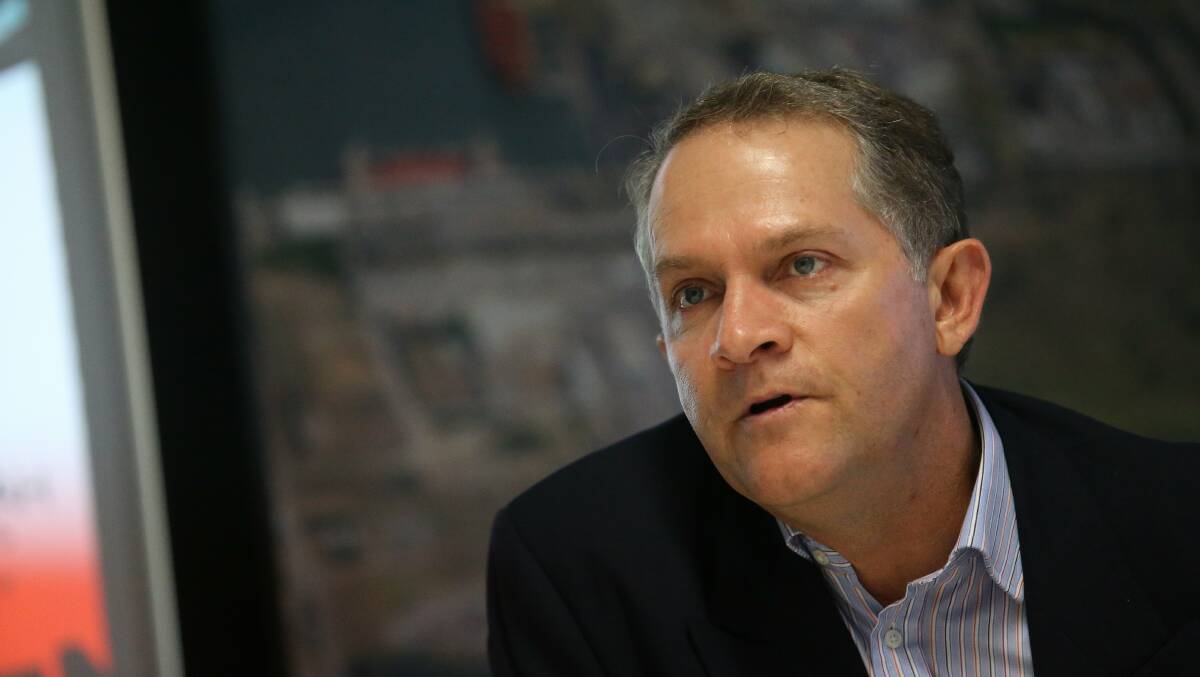
PORT Waratah Coal Services (PWCS) has formally cancelled the controversial T4 coal loader, putting a final end to a project that had been in doubt well before it was approved in 2015.
Subscribe now for unlimited access.
$0/
(min cost $0)
or signup to continue reading
The bullish predictions of coal demand that led PWCS to plan for the port’s fourth terminal never eventuated, meaning the Port of Newcastle has more than 20 per cent spare capacity at the existing three loaders, two of which are operated by PWCS. The third is owned by Newcastle Coal Infrastructure Group, or NCIG.
PWCS chief executive Hennie du Plooy said T4 had been formally cancelled to avoid $100 million in future land lease costs, and because demand for coal was not growing in the way previously expected.
But members of community groups that fought the project claimed the news as a major victory for a long campaign against the project itself and against coal in general.
Mr du Plooy acknowledged the campaign against T4 but insisted it was financial reasons, not environmental ones, that led to Thursday’s formal announcement.
Environmental Justice Australia researcher James Whelan said the decision not to proceed with a fourth coal terminal was a step towards environmental justice for the people of Newcastle.
“But even without T4, we remain the world’s largest coal terminal and experience an unfair burden - air and water pollution, uncovered coal trains and stockpiles, a devastated natural environment and an economy that relies too heavily on the declining coal industry,” Dr Whelan said.
“With the coal industry in structural decline globally, Newcastle and other communities need careful planning that involves community, industry and all levels of government to create a diverse and healthy economy. Now is the time for that planning to commence in earnest."
All up, the Port of Newcastle can handle 210 million tonnes of coal a year, whereas this year’s throughput is likely to be 165 million tonnes, a shortfall of 45 million tonnes.

T4 was first announced in 2009 as likely to handle another 70 million tonnes of coal a year but by the time it was approved in 2015 it had a first stage capacity of only 25 million tonnes, and would have cost an estimated $3.5 billion, including $1 billion for dredging of the Hunter River almost up the Tourle Street bridge linking Mayfield with Kooragang Island.
Mr Hennie du Ploy said on Thursday the project had been formally cancelled because much of the T4 site on Kooragang Island was leased from the privatised Port of Newcastle, and this lease was due to run out in August next year. PWCS owned the rest of the T4 site.
Mr du Ploy said exercising the lease option in 2019 would have cost PWCS about $100 million over 10 years, and although the coal-industry-owned organisation had already spent about $90 million to this stage, the PWCS board decided not to exercise the option.
Mr du Plooy said PWCS had consulted widely before concluding its existing terminals were sufficient to cater for future growth in exports.
He said market conditions for Hunter coal were strong, with exports stable at near-record levels, and prices for the main product, Newcastle steaming coal for power stations, back above $US100 ($132) a tonne.
“With significant growth capacity available in the existing terminals, we do not expect that the conditions to support an investment of the large and long-term nature of T4 will be in place before the development approval lapses in September 2020,” Mr du Plooy said.
“While PWCS will not build a fourth terminal, coal constitutes the bulk of Newcastle port volumes and will remain a big part of Newcastle’s future. Coal is a key component of the global energy mix and is forecast to remain so for the foreseeable future, particularly in our core markets in South East Asia.”

Breaking the port into its three terminals, PWCS’s Carrington terminal is licensed to handle 25 million tonnes a year and its Kooragang terminal 120 million tonnes, giving a combined capacity of 145 million tonnes. NCIG’s Carrington terminal can handle 66 million tonnes.
Mr du Ploy said PWCS exported 105 million tonnes last year.
NCIG does not publish its throughput figures, but its unofficial throughput is expected to be 60 million tonnes this year.
One positive aspect from an environmental point of view would have been the potential for T4 to enable PWCS to close the Carrington coal terminal, which Mr du Plooy acknowledged on Thursday as a possibility at the time.
But he said PWCS was now committed to keeping Carrington open.
He said the Carrington lease ran until 2024 and an extension was now being negotiated.
Greens Newcastle councillor John Mackenzie said the project’s demise was fantastic news for Newcastle.
“T4 was part of the old Newcastle and the air pollution and heavy industry that it represents has no place in the modern emerging global city that Newcastle is becoming,” he said.
“From the outset the economics was against this, the science was against this and the community was against it but because of our broken planning system it was approved anyway”
He said cancellation of T4 meant Newcastle’s port capability could be opened to more diversity rather than being quarantined for a coal.
“Communities are sick of being placed in limbo by a planning system which has no red lights and a government that won’t show leadership by refusing new fossil fuel projects at the outset,” he said.

